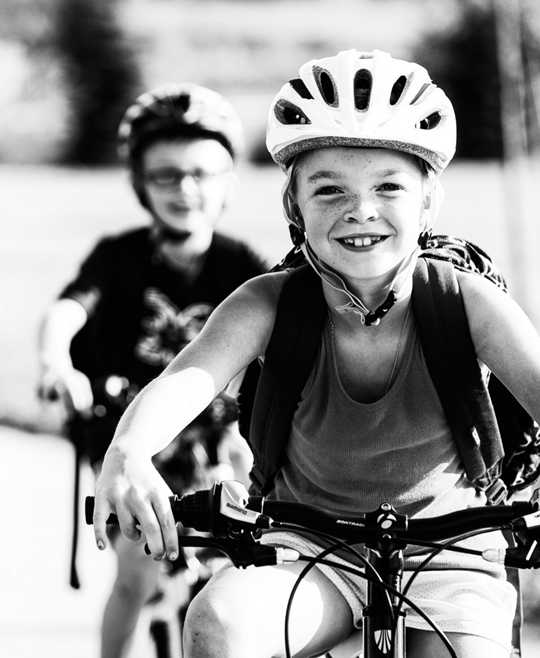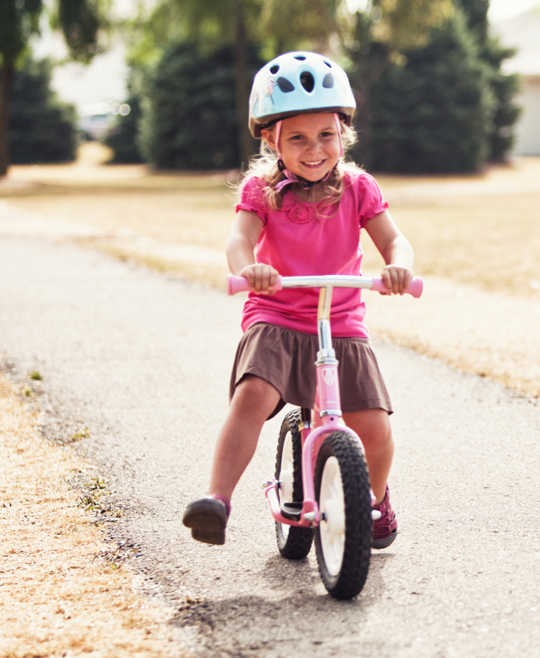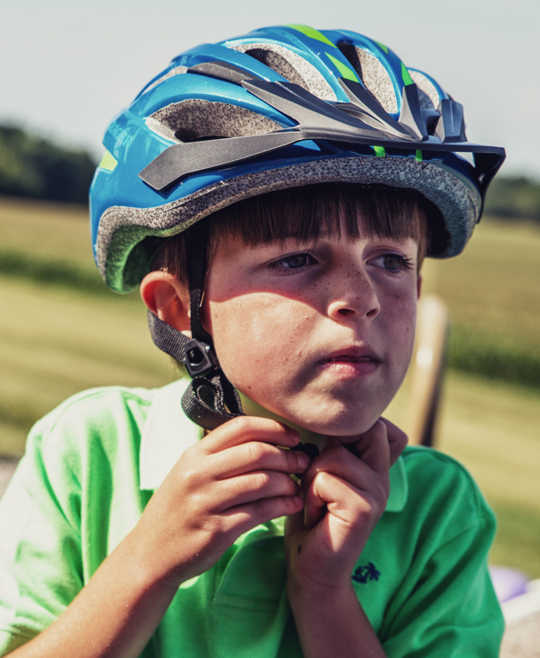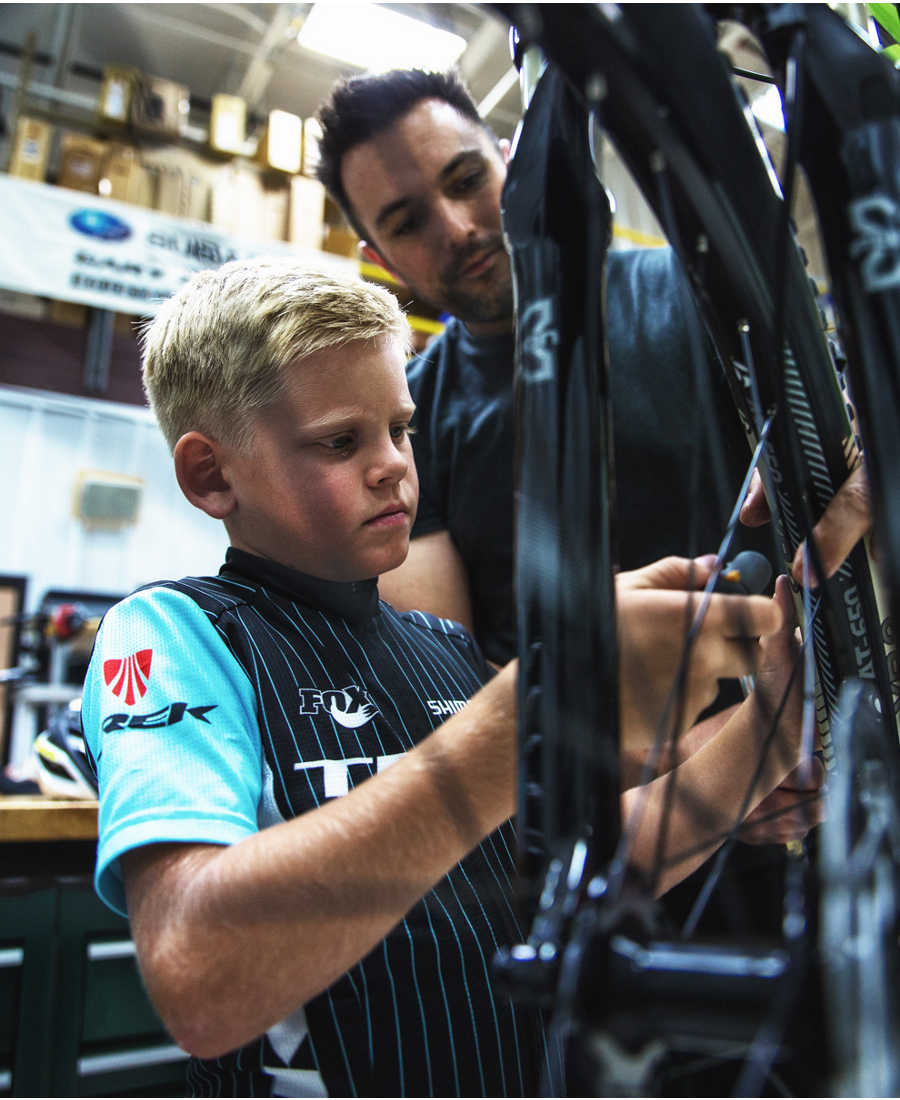
Kids' Bike Buyer's Guide
As parents, we all want the same thing for our kids: a bike that provides safety, comfort, reliability, and ease of use without breaking the bank. We want your child’s first riding experience to be as memorable as yours, and that’s why every child’s bike that carries the Trek name is held to the same rigorous standards as all of the products we make. The bottom line is that getting your child on a well-designed machine is more economical for you in the long run, is easier to learn to ride, and ultimately more enjoyable for your kid from day one.

What size bike does my child need?
Kids’ bikes range in wheel size from 12-26?. For simplicity’s sake, it’s easy to think about your child’s age when determining which size is best for them. Though the guidelines below are general, they go a long way in zeroing in on where to begin your search.
Kids’ bikes are optimized around these wheel sizes in terms of fit and performance level. As wheel size increases, so do the number of options to accommodate the additional skills and riding preferences of older children. While Trek offers one awesome balance bike for the youngest tots, larger wheel sizes include multiple models optimized for road, mountain, or city riding.
Beyond wheel size, the factors driving your decision should be color/style, training wheel compatibility, brake type, gearing, and finally category.

What's a balance bike?
Balance bikes have become popular in recent years as savvy parents have recognized that balance, rather than pedaling, is the most essential component of riding a bike, and should therefore be the starting point of any instruction. They allow small children to push the bike with their feet, and then place them on stationary platforms to coast and practice balancing. It’s easy to think of them as a cross between a scooter and a bicycle. Trek’s Kickster is the best option for the youngest riders, and teaching them to balance early on will make their transition to a bike with pedals all the more easy.
What about training wheels?
You probably learned to ride a bike on training wheels. Most professional cyclists probably did, too. Training wheels are a great way to get kids comfortable on the bike, and to get them hooked on the feeling of freedom that only a bicycle can provide. Trek offers removable training wheels on all of our 12? and 16? kids’ models, and these options are ideal for kids who are too big for a balance bike or simply need a bit more time to get comfortable.
When teaching your child to ride, remember that the emphasis should be on balance, not pedaling. As soon as your child is comfortable with the thought of removing the training wheels, it’s time for them to go.
What's with all the different brakes?
Most bikes designed for the youngest children feature an easy-to-use braking system where simply pedaling backwards engages the brakes. You’ll hear this system referred to as ?pedal brakes? or ?coaster brakes.? Quite simply, it is easier for the youngest children to use their feet for both acceleration and braking, allowing them to focus on more essential skills like balance as they are first learning to ride.
As with training wheels, pedal brakes are only best for children who need them to ride confidently. Hand brakes designed for the size of a child’s hand and reach are easy to use, and are far more effective in all riding situations. This means hand brakes are ultimately the safest choice for children able to grasp their operation. Those who fit on a 20? bike are generally old enough to use them effectively, so we introduce hand brakes at this wheel size.
As your child grows older and begins riding at faster speeds, it may be worth considering a model featuring disc brakes. Disc brakes provide more stopping power than traditional rim brakes, and are more effective in adverse weather conditions. Beginning in the 24? wheel size, Kids’ Neko, Kids’ Dual Sport, Superfly 24 , Farley 24, and Fuel EX Jr are offered with disc brakes. The dedicated mountain models come equipped with hydraulic discs, which offer even more stopping power and variability in braking intensity.
Tell me about gears.
Gears are great. Gears significantly increase a bike’s versatility, and reduce fatigue so that your child can participate in longer rides with the family. As with hand brakes, some amount of gearing will be beneficial to children who are able to operate them properly. Trek dials in gearing for a child’s age and assumed strength, meaning the range is optimized for weight and performance at each of our kids’ sizes.
Trek introduces gearing at the 20? wheel size on models designed for children who have already developed solid bike handling skills. These include the Precaliber and Superfly families. There are 6 and 7-speed options at this size, while the 24? and 26? wheel sizes include a number of 21-speed options as well.
In the end, the ideal gearing for your child depends on the type of riding they will be doing. Longer rides on more variable terrain will require a wider range of gears. Youngsters interested in exploring mountain biking or getting serious on a road bike should have more gears than a kid who will primarily be cruising the neighborhood with friends.

What else do we need?
Remember that it takes more than just a bike for your kid to have a safe and enjoyable riding experience.
A comfortable helmet that fits properly is an absolute necessity. Your kid needs to wear one every single time they step on the bike. A light such as Bontrager’s Flare R, the first tail light designed for visibility during all hours of the day and night, is another safety accessory that is just as critical as your child’s helmet.
To keep things rolling smoothly, a pump and some spare tubes are good to have around. Your child may want accessories such as a bell or horn. Once they are going on longer rides, you may want to consider cycling-specific apparel, gloves, and a dedicated set of shoes/pedals.
Remember that the most important component to your child enjoying riding their bike is you. A supportive and patient teacher is the key ingredient to creating an experience for a child to develop a lifelong passion for cycling.

